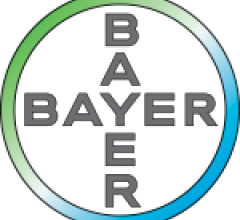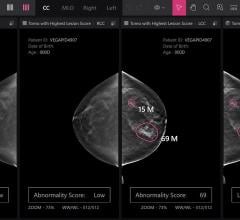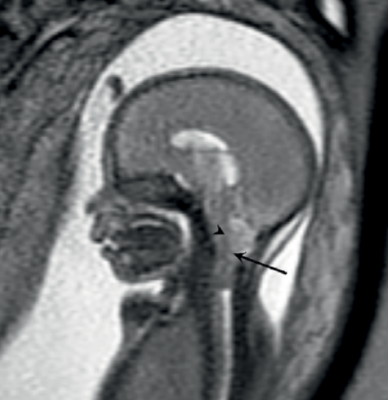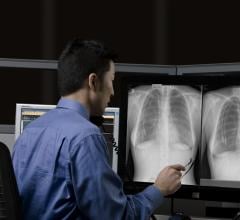October 6, 2016 — Toshiba America Medical Systems Inc. announced it will be displaying a wide array of diagnostic ...
Using anonymized data collected by the Radimetrics Enterprise Platform we identified a customer with a contrast dose outlier and initiated an investigation to gain further insight.
aycan recently introduced aycan store VNA, a vendor neutral archiving (VNA) and distribution system that helps healthcare organizations be more efficient with the management and sharing of images and other data.
Radiology departments have many different needs and face a wide variety of challenges that can impact their departments ...
The American College of Radiology (ACR) announced in a recent statement that if Congress does not act, millions of women may lose insurance coverage for annual mammograms. Patient groups, minority healthcare advocates and breast cancer experts are urging Congress to extend a federal mandate that effectively requires insurers to fully cover annual screening mammograms for women ages 40 and older.
October 5, 2016 — Blackford Analysis officially launched its Smart Localizer product at the Society for Imaging ...
Interventional labs now have an imaging system that provides clinicians flexibility to perform a wide array of procedures with the launch of Toshiba’s Infinix-i Sky +*. The ceiling-mounted system features a double sliding C-arm and 12 x 16-inch flat panel, offering clinicians the potential to increase coverage, speed and patient access.
Despite decades of progress in breast imaging, one challenge continues to test even the most skilled radiologists ...
Ever knock down a silo? You have to be quick. And lucky. Very … very … lucky. Maybe that’s why there are so many silos. Outdated. Counterproductive. Standing tall. In science. In business. In personal relationships (exemplified by Facebook pages and the “friends” who traffic them). And in medicine.
GE Healthcare recently announced U.S. Food and Drug Administration (FDA) 510(k) clearance of its Discovery MI digital positron emission tomography (PET)/computed tomography (CT) system and shared a series of first clinical images. Built with technology allowing significantly better small lesion detectability, Discovery MI can help clinicians in their efforts to diagnose and stage disease earlier.
Bayer Radiology’s Barbara Ruhland and Thom Kinst discuss how radiology departments can address the many different ...
October 5, 2016 — Here is the list of the top 20 most popular pieces of content on the Imaging Technology News (ITN) ...
Contributing Editor Greg Freiherr offers an overview of digital radiography (DR) advances at the Association for Medical Imaging Management (AHRA) 2016 meeting. Read the article “The Coming Push for DR.” Watch a technology report sidebar video on new DR Systems technology.
Agfa highlights how its digital radiography (DR) systems capture analytics data to help improve management of the ...
eHealth Saskatchewan plays a vital role in providing IT services to patients, health care providers, and partners such ...
GE Healthcare announced that the U.S. Food and Drug Administration (FDA) has approved a label change for the ultrasound contrast agent Optison (Perflutren protein-Type A Microspheres Injectable Suspension, USP). The FDA removed the contraindications for use in patients with cardiac shunts and for administration by intra-arterial injection. Both contraindications have been revised and moved to the WARNINGS AND PRECAUTIONS section (5.3 : Systemic Embolization) of the Full Prescribing Information.
Ask anyone from Pokemon Go players to BlackBerry diehards. Smartphones have a lot to offer. That potential may be expressed in high-tech apps or decidedly low-tech speech.
The internet and social media have transformed our lives. It has literally opened up a global connection to those with similar interests and passions. In my focused world of patient advocacy for breast health, I meet innumerable women, fervent in their yearly breast cancer screening yet diagnosed with a missed, delayed and advanced stage cancer because of their dense breast tissue. Like me, these women never knew about the impact of dense breast tissue on the reliability of their mammogram until after their diagnosis. Our mission is to correct this fatal flaw in breast cancer screening.
Mammography has long been considered the gold standard for breast cancer detection, acting as the first line of defense for millions of women every year in hopes of catching cancer early. The true efficacy of the modality has come into question in recent years, however, due to increased understanding about the impact of dense fibroglandular breast tissue on screening. This has led to the emergence and/or increased use of other modalities in an effort to improve cancer detection rates above what is currently capable with mammography.
With today’s widespread internet-savvy, purchasers will most likely research a product online first. Modern medical ...
"The industry standard of imaging system availability is 99.999 percent uptime, but that’s not good enough for Broward Health. Our vendor neutral archive (VNA) is a critical system in our enterprise imaging environment. It serves as the brains of our operation, supporting a variety of clinical customers within high acuity settings. Broward Health Medical Center is a Level I Trauma Center where every minute counts. We need zero downtime.”
The last two decades have brought a series of changes in medicine, technology and healthcare legislation that have impacted the field of diagnostic imaging and the role of the radiologist. Coupled with these changes, imaging volume is declining1 due to costs as well as concerns over patient radiation exposure.2 This environment often makes it challenging for radiology groups to protect their financial performance and ensure they deliver high-quality studies and readings. Fortunately, advances in imaging and information technology have emerged, helping radiologists increase the utilization of diagnostic imaging and moving the radiologist into a more central role in integrated patient care.3
Asante Health System provides comprehensive medical care to more than 580,000 people throughout Southern Oregon and Northern California. As the largest healthcare provider in nine counties, Asante knew seamlessly sharing patient information with affiliates would be key to better physician relationships and improved patient outcomes.


 October 06, 2016
October 06, 2016 




















